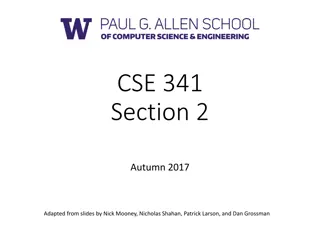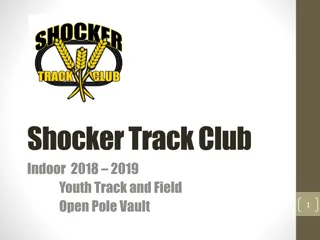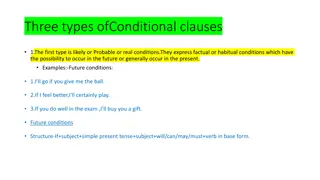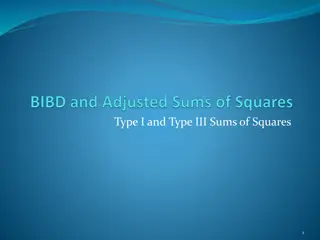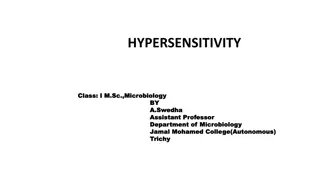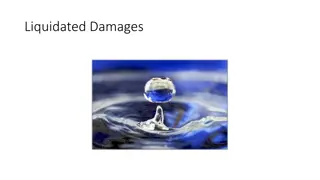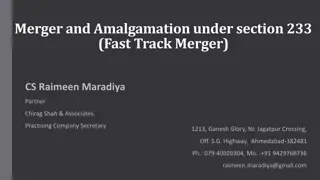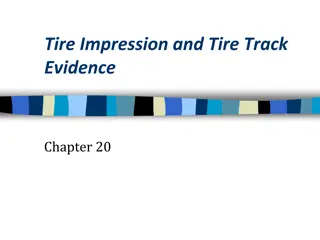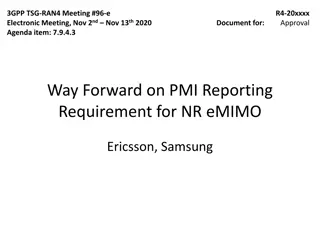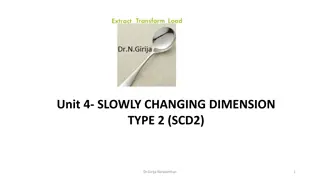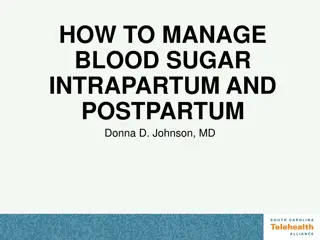
Caterpillar Cat 330, 330L TRACK-TYPE EXCAVATOR (Prefix 6WJ) Service Repair Manual Instant Download
Please open the website below to get the complete manualnn// n
Download Presentation

Please find below an Image/Link to download the presentation.
The content on the website is provided AS IS for your information and personal use only. It may not be sold, licensed, or shared on other websites without obtaining consent from the author. Download presentation by click this link. If you encounter any issues during the download, it is possible that the publisher has removed the file from their server.
E N D
Presentation Transcript
Service Repair Manual Models 330, 330L EXCAVATOR
w 1/17(W) Shutdown SIS Previous Screen Product: EXCAVATOR Model: 330 L EXCAVATOR 6WJ Configuration: 330, 330L TRACK-TYPE EXCAVATORS 6WJ00001-UP (MACHINE) POWERED BY 3306 ENGINE Disassembly and Assembly 330,330 L & 330 LN EXCAVATORS MACHINE SYSTEMS Media Number -SENR5498-01 Publication Date -01/10/2004 Date Updated -19/01/2005 SENR54980022 Travel Motors SMCS - 4351-017; 4351-010 Remove & Install Travel Motors NOTE: Prior to removing the travel motor, drain the oil from the final drive into a suitable container. To drain the oil, put the drain plug in the final drive at the bottom position by moving the machine. Remove the drain plug to drain the oil. The capacity of the final drive is 13 liters (3.4 U.S. gal). At operating temperature, the hydraulic oil tank is hot and under pressure. Hot oil can cause burns. To prevent possible personal injury, release the pressure in the implement hydraulic circuits (boom, stick and bucket) before any hydraulic lines or components are disconnected or removed. 1. Release the pressure in the hydraulic system as follows: a. Fully retract the rod in the stick cylinder. https://127.0.0.1/sisweb/sisweb/techdoc/techdoc_print_page.jsp?returnurl=/sisweb/sisw... 2020/10/9
w 2/17(W) b. Adjust the position of the bucket so it will be flat on the ground when the boom is lowered. d. Lower the boom until the bucket is flat on the ground. d. Shut off the engine, and put the hydraulic activation control lever in the "Lock" position. e. Move the control levers for the boom, bucket, stick and swing through their full travel strokes. This will relieve any pressure that may be present in the pilot system. f. Slowly loosen the air breather cap on the hydraulic oil tank to release the pressure. g. Tighten the air breather cap on the hydraulic oil tank. h. The pressure in the hydraulic system has now been released. Lines and components can now be removed. 2. Remove two covers (1) from the rear of the undercarriage frame assembly. 3. Remove four bolts (2) and the washers that hold clamps (3) in position. Remove the clamps. This will allow the tube assemblies that are connected to the travel motor to move. 4. Disconnect hose assemblies (4) and (7) from the travel motor. Put plugs in the ends of the hose assemblies to keep dirt and debris out of the hydraulic system. 5. Disconnect tube assemblies (5) and (6) from the travel motor. https://127.0.0.1/sisweb/sisweb/techdoc/techdoc_print_page.jsp?returnurl=/sisweb/sisw... 2020/10/9
https://www.ebooklibonline.com Hello dear friend! Thank you very much for reading. Enter the link into your browser. The full manual is available for immediate download. https://www.ebooklibonline.com
w 3/17(W) Installation Of Tool (A) On Travel Motor NOTE: Six socket head bolts hold the travel motor to the final drive. 6. Remove two upper socket head bolts (8) that hold the travel motor to the final drive. Fasten tool (A) and a hoist to the travel motor. 7. Remove four remaining socket head bolts (8) that hold travel motor (9) to the final drive. Remove the travel motor from the final drive. The weight of the travel motor is 120 kg (265 lb). 8. Remove the O-ring seal from the body of the travel motor. NOTE: The following steps are for the installation of the travel motor. 9. Thoroughly clean the mating surface of the travel motor and the final drive prior to installation of the travel motor. 10. Check the condition of the O-ring seal used on the body of the travel motor. If the seal is worn or damaged, use a new part for replacement. Install the O-ring seal on the body. Put 1U6395 O- ring Compound on the O-ring seal. NOTICE During installation of the travel motor in the final drive, do not damage the O-ring seal on the travel motor body. 11. Fasten tool (A) and a hoist to travel motor (9). Put the travel motor in position in the final drive. Install four of socket head bolts (8) that hold the travel motor in position. Remove tool (A), and install two remaining bolts (8). Tighten the six socket head bolts evenly. 12. Check the condition of the O-ring seals used in the ends of tube assemblies (5) and (6) and hose assemblies (4) and (7). If the seals are worn or damaged, use new parts for replacement. https://127.0.0.1/sisweb/sisweb/techdoc/techdoc_print_page.jsp?returnurl=/sisweb/sisw... 2020/10/9
w 4/17(W) Install the O-ring seals in the ends of tube assemblies and hose assemblies. Connect hose assemblies (4) and (7) and tube assemblies (5) and (6) to the travel motor in their original locations. 13. Reinstall two clamps (3) that hold the tube assemblies to the rear of the undercarriage frame assembly. 14. Reinstall two cover assemblies (1) on the rear of the undercarriage frame assembly. 15. Fill the final drive with oil to the correct level. See the Operation & Maintenance Manual for the correct filling procedure. Disassemble & Assemble Travel Motors Start By: a. remove travel motors 1. Thoroughly clean the outside of the travel motor prior to disassembly. Fasten the travel motor to a suitable rotating holding fixture in a vertical position. The weight of the travel motor is 120 kg (265 lb). 2. Put an alignment mark across the head assembly and body group of the travel motor for assembly purposes. The head assembly must be reinstalled in its original position on the travel motor body. NOTICE During removal of head assembly (2) from the travel motor body, do not scratch or damage the mating surfaces of the components. Put identification marks on all parts of the head assembly for assembly purposes. The components must be reinstalled in their original locations. https://127.0.0.1/sisweb/sisweb/techdoc/techdoc_print_page.jsp?returnurl=/sisweb/sisw... 2020/10/9
w 5/17(W) 3. Remove eight socket head bolts (1) that hold the head assembly to the body group. 4. Fasten tool (A), a lifting strap and a hoist to head assembly (2) as shown. Remove head assembly (2). 5. Loosen locking nut (3), and remove adjustment screw (4) from the head. 6. Remove two plugs (9), two seals (7), two balls (6) and two stoppers (5) from the head. Remove O-ring seal (8) from each plug (9). 7. Remove plug (12), spool (10) and the spring from the head. Remove O-ring seal (11) from plug (12). 8. Remove two valve groups (13) from the head. Remove eight socket head bolts (15), two covers (14), two retainers (20), two springs (16), two washers (17) and spool assembly (18) from the head. Remove O-ring seal (19) from each cover (14). https://127.0.0.1/sisweb/sisweb/techdoc/techdoc_print_page.jsp?returnurl=/sisweb/sisw... 2020/10/9
w 6/17(W) 9. Remove O-ring seal (23) from the head. 10. Remove bearing (21) from the head. 11. Remove rod (22) and the O-ring seal from the head. 12. Remove three O-ring seals (26) from the body. 13. Remove spring (24) from the body. 14. Remove port plate (25) from the cylinder assembly. 15. Remove ten springs (27) from the brake piston. 16. Install two of the head mounting bolts with large diameter washers in the body as shown. The washers will retain brake piston (28) in the body when shop air is applied to the brake release port in the body. 17. Apply shop air pressure (free of water) of approximately 525 kPa (75 psi) to the brake release port as shown. Brake piston (28) will move up and out of the body. https://127.0.0.1/sisweb/sisweb/techdoc/techdoc_print_page.jsp?returnurl=/sisweb/sisw... 2020/10/9
w 7/17(W) 18. Install two suitable size bolts in brake piston (28) as shown. Pull the brake piston from the body. 19. Remove two rings (30) from the brake piston. 20. Remove plug (29), bushing (31), spring (32) and seat (33) from brake piston (28). 21. Turn the travel motor body on its side as shown. Remove cylinder assembly (34). 22. Disassemble cylinder assembly (34) as follows: https://127.0.0.1/sisweb/sisweb/techdoc/techdoc_print_page.jsp?returnurl=/sisweb/sisw... 2020/10/9
w 8/17(W) a. Remove nine piston assemblies (35) and plate (36) as a unit from the cylinder. Separate the piston assemblies from the plate. b. Remove bushing (37) and spacer (38) from the cylinder. c. Remove two friction plates (39) and plate (40) from the cylinder. d. Remove nine springs (41) from the cylinder. 23. Remove swash plate (42) from the shaft plate. https://127.0.0.1/sisweb/sisweb/techdoc/techdoc_print_page.jsp?returnurl=/sisweb/sisw... 2020/10/9
w 9/17(W) 24. Install two suitable size forcing bolts in plate (43) as shown. Tighten the forcing bolts evenly to loosen plate (43) from the two pins in the bottom of the travel motor body. Remove the plate. 25. Using a soft faced hammer, remove shaft (44) from the travel motor body in the direction shown. 26. Remove retaining ring (45) from the shaft (44). Retaining ring (45) locates the bearing (46) on shaft (44). 27. Using a press, push shaft (44) out of bearing (46). https://127.0.0.1/sisweb/sisweb/techdoc/techdoc_print_page.jsp?returnurl=/sisweb/sisw... 2020/10/9
w 10/17(W) 28. Remove inner race (47) from shaft (44). 29. Remove retaining ring (48) from the travel motor body. 30. Remove cover (49) from the travel motor body. 31. Remove O-ring seal (50) from the cover. 32. Remove lip-type seal (51) from the cover. https://127.0.0.1/sisweb/sisweb/techdoc/techdoc_print_page.jsp?returnurl=/sisweb/sisw... 2020/10/9
w 11/17(W) 33. Install a suitable size screw in the end of stopper (52). Pull stopper (52) out of the travel motor body. Remove piston (53) from under the stopper. 34. Remove seal (54) from the stopper. 35. Loosen nut (56). Remove setscrew (55) from the travel motor body. Remove the piston from under the setscrew. NOTE: The following steps are for the assembly of the travel motor. 36. Be sure all parts of the travel motor are thoroughly clean and free of dirt and debris prior to assembly. Check the condition of all O-ring seals and rings. If any of the seals or rings are worn or damaged, use new parts for replacement. Put clean hydraulic oil on the O-ring seals and rings after installation on a component. 37. Install the piston in the travel motor body. Install setscrew (55) in the travel motor body. Install nut (56) over the setscrew. After adjustment of setscrew (55), tighten nut (56) to a torque of 128 10 N m (95 7 lb ft). https://127.0.0.1/sisweb/sisweb/techdoc/techdoc_print_page.jsp?returnurl=/sisweb/sisw... 2020/10/9
w 12/17(W) 38. Install seal (54) on stopper (52). Install piston (53) in the travel motor body. Install the stopper over the piston. The stopper should be even with the machined surface in the travel motor body after installation. 39. Using tool (B), install lip-type seal (51) in cover (49). Install the seal with the lip facing in and until it makes contact with the counterbore in the cover. 40. Install O-ring seal (50) on cover (49). Put clean hydraulic oil on the lip of the seal and on the O-ring seal. 41. Install retaining ring (48) in the travel motor body. 42. Install cover (49) in the travel motor body as shown. 43. Install inner race (47) on the end of shaft (44) until it is sealed against the shoulder on the shaft. https://127.0.0.1/sisweb/sisweb/techdoc/techdoc_print_page.jsp?returnurl=/sisweb/sisw... 2020/10/9
w 13/17(W) 44. Install retaining ring (45) on shaft (44). Use a press to push shaft (44) into bearing (46). Install the shaft until the bearing makes contact with the retaining ring. 45. Using a soft faced hammer, reinstall shaft (44) in the travel motor body. 46. Reinstall plate (43) in the travel motor body in its original position. It may be necessary to use a soft faced hammer to seat the plate in the travel motor body. 47. Reinstall swash plate (42) in its original position in the travel motor body. 48. Assemble cylinder assembly (34) as follows: a. Put clean hydraulic oil on all parts of the cylinder assembly (34) during assembly. b. Install nine springs (41) in the cylinder as shown. https://127.0.0.1/sisweb/sisweb/techdoc/techdoc_print_page.jsp?returnurl=/sisweb/sisw... 2020/10/9
w 14/17(W) c. Install two friction plates (39) and plate (40) on the cylinder. Be sure there is a friction plate on each side of plate (40). d. Install spacer (38) and bushing (37) on the cylinder as shown. e. Install nine piston assemblies (35) in plate (36). Install the nine piston assemblies and the plate, as a unit, in the cylinder. 49. Position the travel motor body on its side as shown. NOTICE Be sure the components in cylinder assembly (34) do not come apart during installation in the travel motor body. 50. Carefully install cylinder assembly (34) over the shaft in the travel motor housing. https://127.0.0.1/sisweb/sisweb/techdoc/techdoc_print_page.jsp?returnurl=/sisweb/sisw... 2020/10/9
w 15/17(W) 51. Install seat (33), spring (32) and bushing (31) in brake piston (28). Install plug (29). Tighten plug (29) to a torque of 74 5 N m (54 4 lb ft). 52. Install two rings (30) on brake piston (28). 53. Put clean hydraulic oil on the rings in brake piston (28). Install the brake piston in the travel motor body. It may be necessary to use a soft faced hammer to seat the brake piston. 54. Install three O-ring seals (26) in the travel motor body. 55. Install spring (24) in the travel motor body. 56. Install ten springs (27) in brake piston (28). 57. Put port brake (25) in its original position on the cylinder assembly. https://127.0.0.1/sisweb/sisweb/techdoc/techdoc_print_page.jsp?returnurl=/sisweb/sisw... 2020/10/9
w 16/17(W) 58. Install bearing (21) in the head. 59. Install rod (22) in the head. 60. Install O-ring seal (23) on the head as shown. 61. Reinstall two valve groups (13) in the head. Tighten each valve group to a torque of 176 10 N m (130 7 lb ft). 62. Install spool assembly (18), two washers (17), two springs (16) and two retainers (20) in the head. Install two O-ring seals (19), two covers (14) and eight socket head bolts (15) in the head. Tighten the socket head bolts to a torque of 98 15 N m (70 11 lb ft). 63. Install the spring and spool (10) in the head. Install O-ring seal (11) on plug (12). Install the plug in the head. Tighten the plug to a torque of 74 5 N m (54 4 lb ft). 64. Install O-ring seal (8) on each plug (9). Install two stoppers (5), two balls (6), two seals (7) and two plugs (9) in the head. Tighten plugs (9) to a torque of 36 2 N m (27 1 lb ft). https://127.0.0.1/sisweb/sisweb/techdoc/techdoc_print_page.jsp?returnurl=/sisweb/sisw... 2020/10/9
w 17/17(W) 65. Install adjustment screw (4) and locking nut (3) in the head. 66. Fasten tool (A), a lifting strap and a hoist to head assembly (2). Put the head assembly in its original position on the travel motor body group. 67. Install eight socket head bolts that hold head assembly (2) to the travel motor body group. Tighten the socket head bolts to a torque of 285 30 N m (210 22 lb ft). End By: a. install travel motors Copyright 1993 - 2020 Caterpillar Inc. Fri Oct 9 20:32:35 UTC+0800 2020 All Rights Reserved. Private Network For SIS Licensees. https://127.0.0.1/sisweb/sisweb/techdoc/techdoc_print_page.jsp?returnurl=/sisweb/sisw... 2020/10/9
w 1/4(W) Shutdown SIS Previous Screen Product: EXCAVATOR Model: 330 L EXCAVATOR 6WJ Configuration: 330, 330L TRACK-TYPE EXCAVATORS 6WJ00001-UP (MACHINE) POWERED BY 3306 ENGINE Disassembly and Assembly 330,330 L & 330 LN EXCAVATORS MACHINE SYSTEMS Media Number -SENR5498-01 Publication Date -01/10/2004 Date Updated -19/01/2005 SENR54980023 Automatic Travel Speed Change Valve SMCS - 3220-010; 3220-017 Remove & Install Automatic Speed Change Valve NOTE: The automatic travel speed change valve is located behind the right rear access door. At operating temperature, the hydraulic oil tank is hot and under pressure. Hot oil can cause burns. To prevent possible personal injury, release the pressure in the implement hydraulic circuits (boom, stick and bucket) before any hydraulic lines or components are disconnected or removed. 2. Release the pressure in the hydraulic system as follows: a. Fully retract the rod in the stick cylinder. b. Adjust the position of the bucket so it will be flat on the ground when the boom is lowered. c. Lower the boom until the bucket is flat on the ground. d. Shut off the engine, and put the hydraulic activation control lever in the "Lock" position. e. Move the control levers for the boom, bucket, stick and swing through their full travel strokes. This will relieve any pressure that may be present in the pilot system. f. Slowly loosen the air breather cap on the hydraulic oil tank to release the pressure. g. Tighten the air breather cap on the hydraulic oil tank. h. The pressure in the hydraulic system has now been released. Lines and components can now be removed. https://127.0.0.1/sisweb/sisweb/techdoc/techdoc_print_page.jsp?returnurl=/sisweb/sisw... 2020/10/9
w 2/4(W) 2. Put identification marks on four hose assemblies (2) for installation purposes. Disconnect four hose assemblies (2) from the automatic travel speed change valve. Put plugs in the hose assemblies to keep dirt and debris out of the hydraulic system. 3. Remove four bolts (1) and the washers that hold the automatic travel speed change valve in place. Remove automatic travel speed change valve (3). NOTE: Install the automatic travel speed change valve in the reverse order of removal. 4. Check the oil level in the hydraulic oil tank. Fill the hydraulic oil tank with oil to the correct level. See the Operation & Maintenance Manual for the correct filling procedure. Disassemble & Assemble Automatic Travel Speed Change Valve Start By: a. remove automatic travel speed change valve 1. Be sure the automatic travel speed change valve is thoroughly clean prior to disassembly. Put identification marks on all parts of the automatic travel speed change valve for assembly purposes. 2. Remove four socket head bolts (1) and plates (2) and (3) from the valve body. If necessary, remove the locknut and adjusting screw from plate (2). https://127.0.0.1/sisweb/sisweb/techdoc/techdoc_print_page.jsp?returnurl=/sisweb/sisw... 2020/10/9
w 3/4(W) 3. Install a suitable size bolt in the threaded hole in the end of stopper (4). Pull stopper (4) straight out of the valve body. NOTICE Be sure not to lose ball (10) when guide (6) is removed from the valve body. 4. Remove spring (5) and guide (6) from the valve body. Remove ball (10) from guide (6). 5. Remove O-ring seal (9) from stopper (4). 6. Remove stopper (12) and the spool assembly from the valve body. 7. Remove piston (8) from stopper (12). Remove spool (7) from valve (11). 8. Remove two O-ring seals (14) from stopper (12). Remove ring (13) from valve (11). NOTE: The following steps are for the assembly of the automatic travel speed change valve. 9. Be sure all parts of the automatic travel speed change valve are thoroughly clean prior to assembly of the valve. Put clean hydraulic oil on all internal parts. Check the condition of all O- ring seals and rings used in the automatic travel speed change valve. If any of the seals or rings are worn or damaged, use new parts for replacement. 10. Install two O-ring seals (14) on stopper (12). 11. Install ring (13) on valve (11). 12. Install O-ring seal (9) on stopper (4). 13. Install piston (8) in stopper (12). https://127.0.0.1/sisweb/sisweb/techdoc/techdoc_print_page.jsp?returnurl=/sisweb/sisw... 2020/10/9
w 4/4(W) 14. Install spool (7) in valve (11). 15. Install valve (11) and stopper (12) in the valve body. 16. Install ball (10) in guide (6). 17. Install guide (6), spring (7) and stopper (4) in the valve body. 18. Reinstall plates (2) and (2) and socket head bolts (1) that hold them. NOTE: If the adjustment screw and locknut in plate (2) was removed, tighten the locknut to a torque of 16 1.6 N m (12 1.18 lb ft)after adjustment of the automatic travel speed change valve. End By: a. install automatic travel speed change valve Copyright 1993 - 2020 Caterpillar Inc. Fri Oct 9 20:33:30 UTC+0800 2020 All Rights Reserved. Private Network For SIS Licensees. https://127.0.0.1/sisweb/sisweb/techdoc/techdoc_print_page.jsp?returnurl=/sisweb/sisw... 2020/10/9
w 1/18(W) Shutdown SIS Previous Screen Product: EXCAVATOR Model: 330 L EXCAVATOR 6WJ Configuration: 330, 330L TRACK-TYPE EXCAVATORS 6WJ00001-UP (MACHINE) POWERED BY 3306 ENGINE Disassembly and Assembly 330,330 L & 330 LN EXCAVATORS MACHINE SYSTEMS Media Number -SENR5498-01 Publication Date -01/10/2004 Date Updated -19/01/2005 SENR54980024 Final Drives SMCS - 4050-010; 4050-017 Remove & Install Final Drives Start By: a. separate track assemblies At operating temperature, the hydraulic oil tank is hot and under pressure. Hot oil can cause burns. To prevent possible personal injury, release the pressure in the implement hydraulic circuits (boom, stick and bucket) before any hydraulic lines or components are disconnected or removed. 2. Release the pressure in the hydraulic system as follows: a. Fully retract the rod in the stick cylinder. b. Adjust the position of the bucket so it will be flat on the ground when the boom is lowered. c. Lower the boom until the bucket is flat on the ground. d. Shut off the engine, and put the hydraulic activation control lever in the "Lock" position. https://127.0.0.1/sisweb/sisweb/techdoc/techdoc_print_page.jsp?returnurl=/sisweb/sisw... 2020/10/9
Suggest: If the above button click is invalid. Please download this document first, and then click the above link to download the complete manual. Thank you so much for reading
w 2/18(W) e. Move the control levers for the boom, bucket, stick and swing through their full travel strokes. This will relieve any pressure that may be present in the pilot system. f. Slowly loosen the air breather cap on the hydraulic oil tank to release the pressure. g. Tighten the air breather cap on the hydraulic oil tank. h. The pressure in the hydraulic system has now been released. Lines and components can now be removed. 2. Remove the access cover assembly from over the rear side of the final drive. 3. Fasten tool (A) and a hoist to final drive (1). Put slight lifting tension on the final drive with the hoist. 4. Disconnect hose assemblies (2) and (5) from the travel motor. Disconnect pipes (6) and (7) from the travel brake valve. Put plugs in the pipes and hose assemblies to keep dirt and debris out of the hydraulic system. 5. Remove twenty bolts (4) that hold the final drive to the undercarriage frame assembly. 6. Install suitable size forcing screws in two threaded holes (3) in the undercarriage frame assembly. Tighten the forcing screws evenly to loosen the final drive from the undercarriage frame assembly. Remove the final drive. The weight of the final drive is 651 kg (1435 lb). NOTE: The following steps are for the installation of the final drive. 7. Be sure the mating surfaces of the final drive and the undercarriage frame assembly are clean and free of dirt and debris. 8. Check the condition of the O-ring seals in the ends of pipes (6) and (7) and in hose assemblies (2) and (5). If any of the seals are worn or damaged, use new parts for replacement. 9. Fasten a hoist to the final drive, and put it in position in the undercarriage frame assembly. Be sure all mounting bolt holes are in alignment. 10. Put a thin coat of 9S3263 Thread Lock on threads of twenty bolts (4). Install twenty bolts (4) that hold the final drive to the undercarriage frame assembly. Tighten the bolts evenly. https://127.0.0.1/sisweb/sisweb/techdoc/techdoc_print_page.jsp?returnurl=/sisweb/sisw... 2020/10/9
https://www.ebooklibonline.com Hello dear friend! Thank you very much for reading. Enter the link into your browser. The full manual is available for immediate download. https://www.ebooklibonline.com





